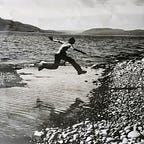The Overthrow of Democratically Elected Governments is no Stranger to the Americas: a photo-essay of Dictatorship in Chile & Argentina
One day in September of 1973, a right-wing military junta overthrew the government of democratically elected Chilean President Salvador Allende. With swift efficiency, leaders in the Chilean military used their nation’s Air Force to bomb the presidential palace — El Palacio de la Moneda. And before the smoke had cleared, the junta stormed the building and discovered the body of President Allende, who had apparently committed suicide during the attack. Abruptly, Chilean citizens found themselves with a new leader: military dictator Augusto Pinochet.
Pinochet served as President all the way until 1990. He even retained his position as Commander-in-Chief of the Chilean Army until 1998. And to this day, many Chileans look back upon his rule fondly, for in many respects, Pinochet was an extremely effective leader. He opened up the nation’s previously floundering economy, for example, which helped turn Chile into an economic powerhouse whose success quickly surpassed the rest of its South American neighbors.
There’s just this one other little thing to remember, though. Putting aside the fact that Pinochet used violence, instead of popular consent, to arrive in power in the first place, he also solidified and maintained his position in power through the use of state-sponsored terrorism against thousands of civilians.
Over 3,000 Chileans were murdered and 27,000 more arrested and tortured as political prisoners under Pinochet’s rule.
Unfortunately, the story of political persecution and terror at the hands of a military regime in South America’s recent history is not at all unique to Chile.
In Argentina, the violence was even more extreme. From 1976 to 1983, an estimated 30,000 civilians were kidnapped and murdered by their government. A common means of eliminating political dissidents during this era was by drugging the victims and dumping their live bodies out of helicopters into the Atlantic Ocean.
The legacy that this era of state-sponsored terrorism has left on the populations of countries like Chile and Argentina is still profoundly present to this day. Reflections on these extended national traumas are visible throughout the countries in graffiti, museums and public art both urban and rural.
Stunningly, many of the perpetrators of these crimes against humanity have still not been held to account for their actions. To this day, the families of many of the victims do not know exactly what happened to their lost loved ones. The photographs below show images of two nations still struggling to come to terms with what happened to “Los Deceparecidos” — “The Disappeared.”
349. Santiago, Chile. This is El Palacio de la Moneda, the presidential palace of the nation of Chile. Original construction on this building began in 1784. If it looks slightly more polished than one might expect of such an historic building, that’s because Augusto Pinochet bombed his way into it in 1973. Some renovations have since taken place.
350. Santiago, Chile. Museum of Memory and Human Rights. The rough equivalent of South America’s Holocaust Museum.
351. Santiago, Chile. Stunning architecture for a stunning museum.
352. Santiago, Chile. “The museum is a school. The artist learns to communicate, the public learns to make connections.”
353. Buenos Aires, Argentina. Buenos Aires has the most impressive density and array of graffiti I have ever seen. Here, a young man named Luciano proclaims, “Terrorism is Silence in the Street.”
354. Buenos Aires, Argentina. Luciano was one of the 30,000 Argentinians who was kidnapped and murdered by his government in the late 70’s and early 80’s. “The Disappearance of Luciano is State Terrorism.”
355. Buenos Aires, Argentina. “Freedom to Political Prisoners.”
356. Buenos Aires, Argentina. “No! To the impunity of yesterday and today.”
357. Ushuaia, Argentina. Even in far-flung Patagonia, heartache for Los Deceparecidos is still very much alive. Here, we have a beautifully simple plea for “Justice” for this unknown shadow of a figure.
358. Ushuaia, Argentina. Los Deceparecidos…it could have been me, it could have been you.
For more, visit:
- https://www.csmonitor.com/2006/1212/p06s01-woam.html
- https://www.history.com/news/mothers-plaza-de-mayo-disappeared-children-dirty-war-argentina
— — — — — — — — — —
This photo-essay was originally posted in December of 2013 on Both Halves of the Glass.
Original title: Silencio en la Calle
